
Sana’a, the Yemeni capital, is of the oldest continuously-inhabited cities in the world (others being Jericho in Palestine, as well as Damascus and Aleppo in Syria and Arbil in Iraq’s Kurdistan). The city is believed to have been founded by Shem, the son of Noah – the guy who built an ark and survived the biblical flood. Sana’a used to be the capital of only North Yemen before the reunification in 1990.

Why Travel to Sana’a in Yemen?
- The low-down: Sana’a is a city like few others. Here even the most experienced travellers get some form of culture shock – the feeling that you are from Mars and everybody knows it. It is an amazing city, but will be off-limits for a while unless you are totally nuts!
- The brightest highlight: Just being in Yemen is already an amazing experience. To walk around the city and meeting the locals, seeing them doing their daily chores. Incredible!
- Intrepid destination: Absolutely, totally intrepid. Now off-limits to most.
- Globerovers score (10 is the highest): I love intrepid places and Sana’s, just like the rest of Yemen I was lucky to explore before the current wars, was such an eye-opener. I can’t give Sana’a less than 9.8 out of 10!

Table of Contents
The Sana’a Culture Shock
As you drive from the airport to the city, your culture shock slowly builds up and exhilarates you as you enter the city. Don’t be too scared. Check in at one of the cosy guesthouses in the historical part of the city of Sana’a. Once you have dropped off your bag and signed the hotel register, head out the door right into the action of old Sana’a.
You are in for a real treat. It’s a time warp! While you may not know what Sana’a looked like a hundred years ago, you will be totally convinced that time has not changed here in all that time.
Almost everybody still wears their traditional clothing. Men generally wear the thawb, or thobe, an ankle-length garment similar to a robe and usually having long sleeves. An izaar, a lower garment, is typically donned underneath. As a symbolic decoration, the jambiya, a short curved blade dagger is typically worn by men above the age of 14 as an accessory on a belt.
While you may think time has been standing still here for 100 years – think again. These men are very brand conscious. The jambiya comes in many brands which, depending on the brand, vary from 1,000 Yemeni rials (US$5) up to 30 million Yemeni rials (US$140) or even more.
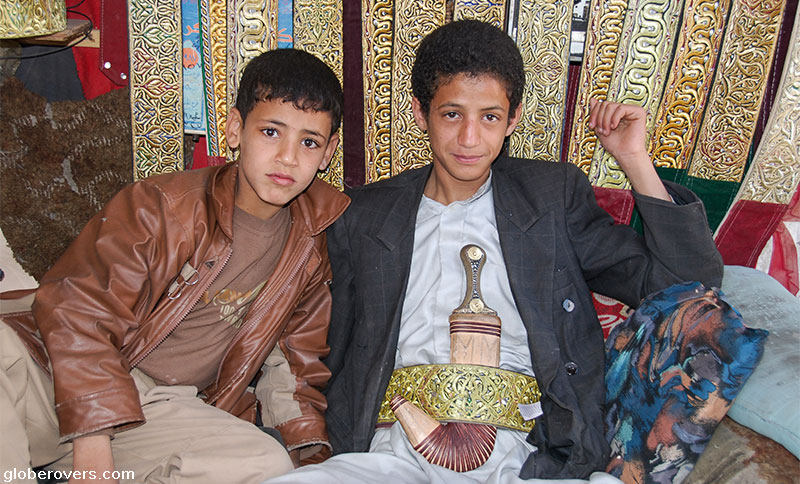
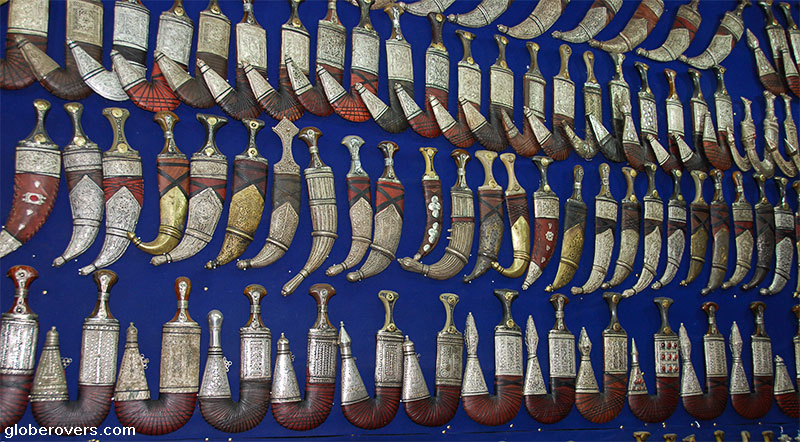
The Women of Sana’a
All women have to cover up every part of their body. The majority of local women wear the black niqaab, which is a headscarf that only allows their eyes to be seen. The niqaab face covering forms part of the sartorial hijab, the head covering. However, some women prefer to wear the chadari rather than the niqaab. A chadari has a fine grille over the eyes that the woman looks through.
Women stay at home to take care of household chores and raise the kids. All stores are staffed exclusively by qat-chewing men.
Yemeni women do not hold many economic, social or cultural rights. The combination of a high level of illiteracy, traditional culture and religion, restricts women to their homes so few are seen in public. When they leave home, they must be chaperoned by a family member and enter and exit the bazaar very quickly.
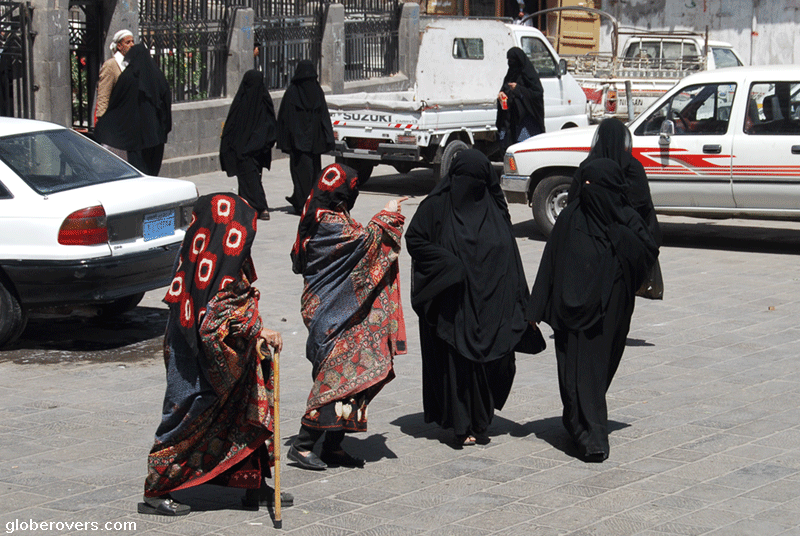
The Qat-Chewing Men of Sana’a
Men staff all stores, including those that sell women’s clothing.
Men chew qat non-stop. Qat, or khat, is a flowering plant native to the Horn of Africa and the Arabian Peninsula. Qat chewing has a history as a social custom dating back thousands of years and it is still very much alive around the Arabian Peninsula, in particular in Yemen.
The World Health Organisation (WHO) classified it as a drug of abuse in 1980 as it can produce mild-to-moderate psychological dependence though it is not considered to be seriously addictive. Many Yemeni men, including teens, chew qat non-stop. They can easily be spotted with a big bulge in one cheek and a small plastic bag with green leaves in hand.
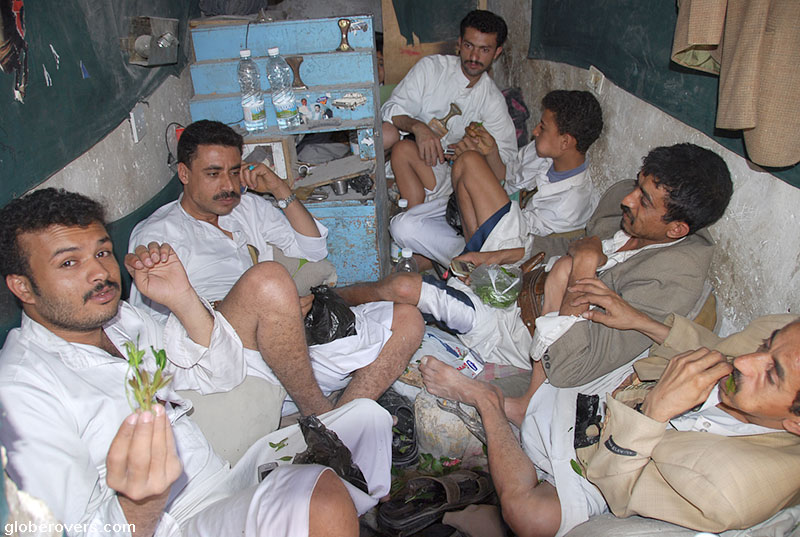
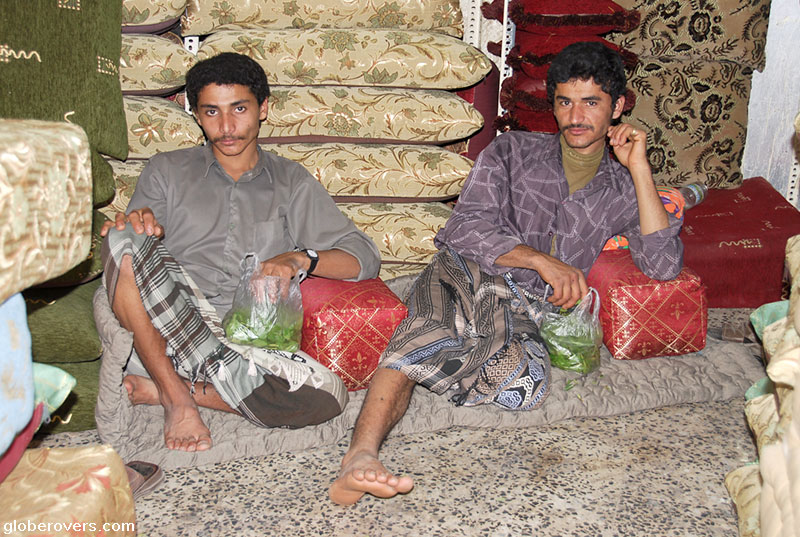
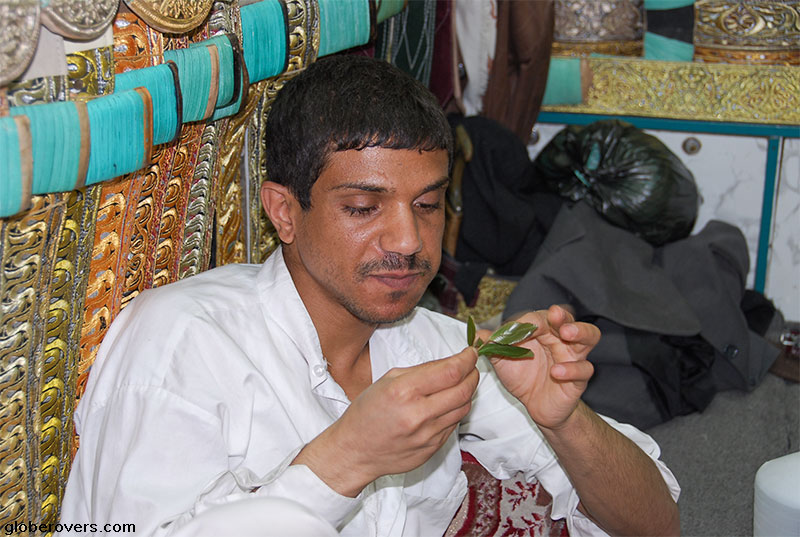
What to See in Sana’a
Once you are in the old city, where you should be staying in one of the cosy guesthouses, just walk around and explore the many old buildings, markets, and museums.
This is not a tourist city so don’t expect any tourist facilities. Even the museums are very basic. The shops are fascinating. The market area is a sight from a different era. Think back to a hundred years ago. Time has stood still here, as it has all across Yemen.
Among the highlights of Sana’a are:
- Bab al-Yemen – the gate leading into the Old City, which is surrounded by ancient walls.
- Great Mosque of Sana’a – one of the oldest mosques in the world.
- Al Saleeh Mosque – one of the largest mosques in the world.
- National Museum – located in a former palace.
- Military Museum – with many artefacts related to the Yemeni military.
- Dar al-Hajar – home of the Rock Palace of an Imam of Yemen north of Sana’a.
- North of Sana’a – picturesque rock villages such as Kawkaban, Thula, and Al Mahwit.
- In central Yemen at the Hadhramaut Valley, lies Shibam Hadhramaut is justifiably described as “the oldest skyscraper city in the world” or “the Manhattan of the desert”, and is one of the oldest examples of city planning based on the principle of vertical construction.
The people are generally friendly and as long as you blend into your environment with both your clothing and your behaviour, you should be fine. Dress absolutely conservatively in dark clothes and be respectful in all situations.
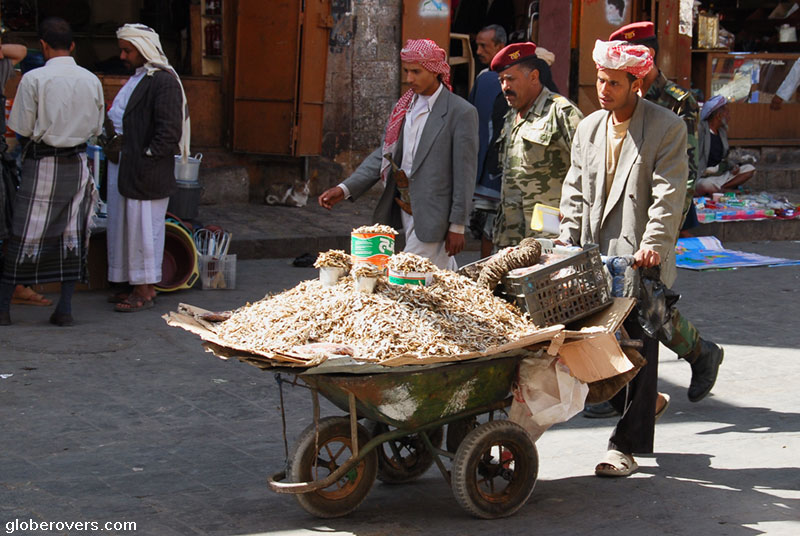
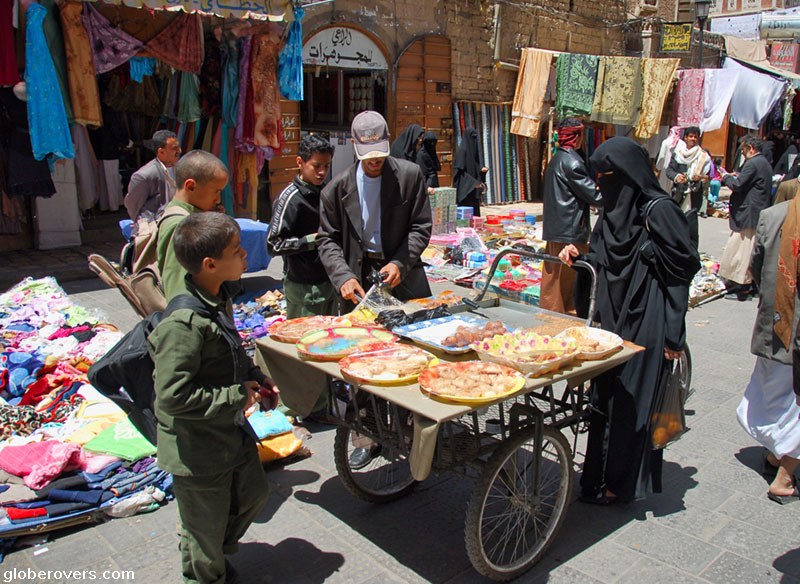
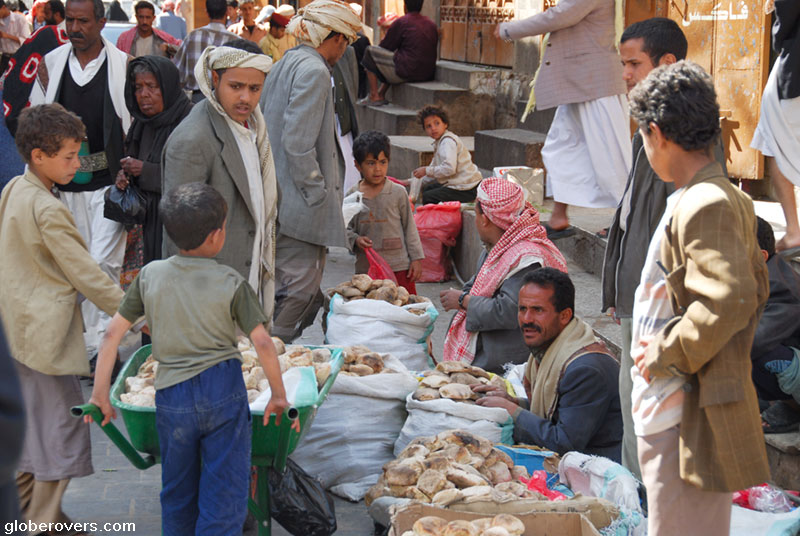
Taking photos of kids and men without prior permission is acceptable, but be humble and thankful to your subjects. Avoid taking photos of women, or at least do it extremely discreetly. Taking photos of young girls is generally acceptable but it is best to first ask permission from the girl and or the parents.
Venturing outside the old walled city is rewarding too, in particular the markets where, once again, you need to blend in with your local environment as much as possible.
As the culture shock flares up from time to time, just stand still and take it in until you feel comfortable again to continue walking.
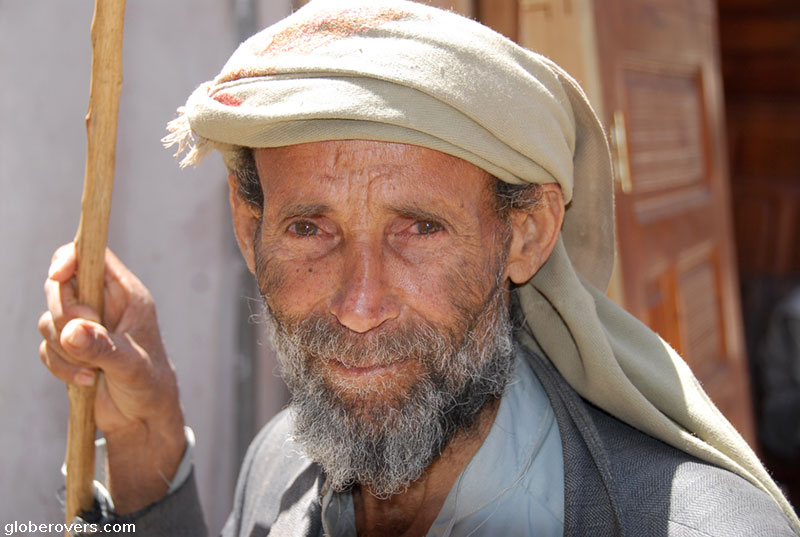

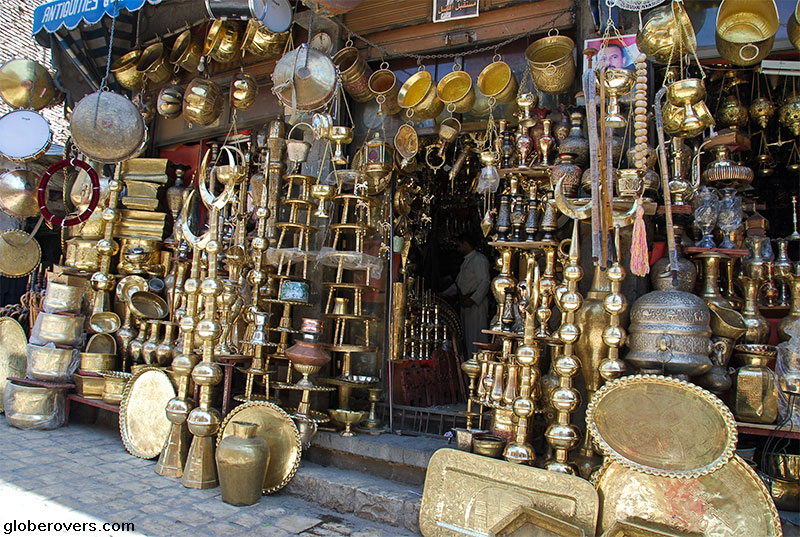
Current Travel Warnings
The current (2022) travel advisory is as follows: “Due to the ongoing war, Sana’a and all of Yemen is off-limits to foreign travellers”. In Sana’a you can travel freely but you need road permits for basically every journey outside the capital.
Foreigners that are found to be in places they are not allowed, without a guide or without the right documents, risk detention or may even face terrorism and spying charges. It’s not something to take lightly; even if you are a backpacker, get in touch with a travel agency and arrange a tour and the necessary permits.
Many of the roadside checkpoints are controlled by the army, police, or even local tribes, some of which some are friendly, some unfriendly. The travel agencies know the situation on the ground, which can be different from village to village.

Sana’a has suffered from endless wars, famine, and even endless rains and floods!
The August 2020 Flooding of Sana’a
On August 10th, 2020, this report was published by Al Jazeera News:
The houses in Yemen’s UNESCO-listed Old City of Sana’a are collapsing due to heavy rains, as months of floods and storms assail a country already reeling from war, food shortages, and disease.
The distinctive brown and white mud-brick houses of Sanaa’s historic neighbourhoods, which date from before the 11th century, have long been under threat from conflict and neglect.
Muhammad Ali al-Talhi’s house partially collapsed on Friday as heavy rain battered Sanaa, leaving the family, including six women and six children, homeless.
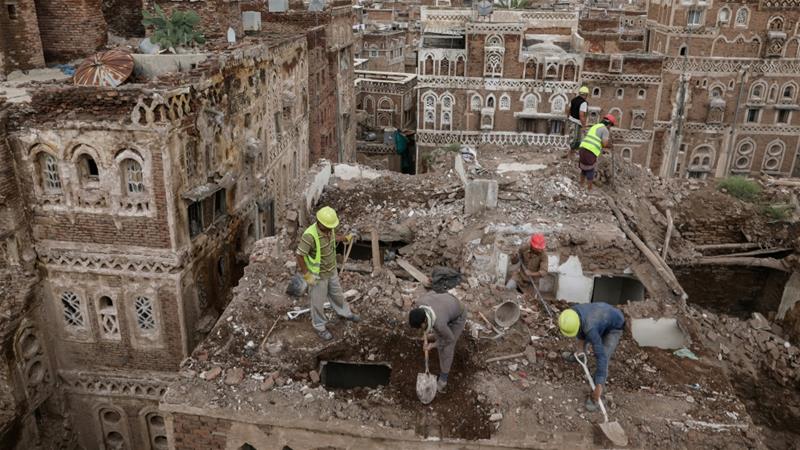
PHOTO: Khaled Abdullah /Reuters
“Everything we had is buried,” he said surrounded by ancient debris and mud, appealing for help to find shelter.
Aqeel Saleh Nassar, deputy head of the Historic Cities Preservation Authority, said people were not maintaining these old buildings as they had done in the past, leading to cracks and structural weakening.
It is a thrilling experience to wander through the streets of Sana’a. Try to make friends with the locals and hopefully you will be invited into their homes to experience their way of life, or even to attend a wedding! It is truly fascinating! Here are a few of the photos I captured during my visit in 2007:
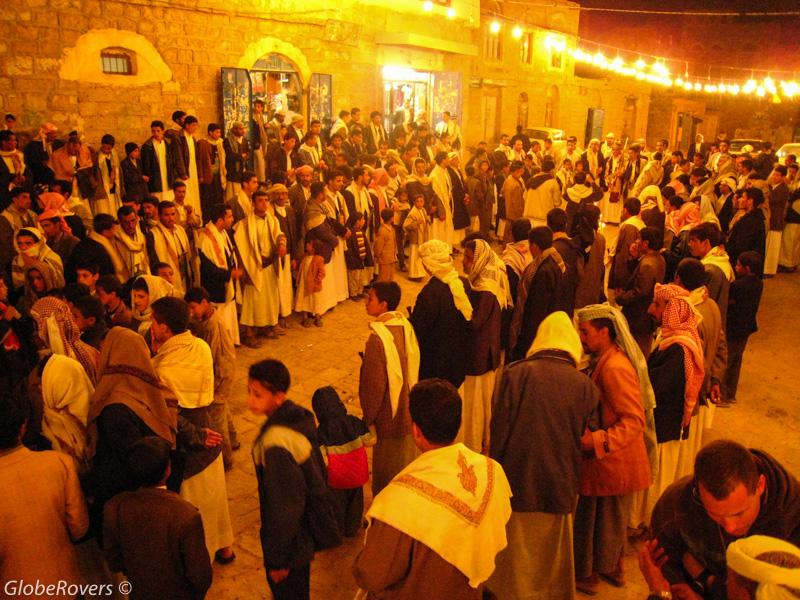

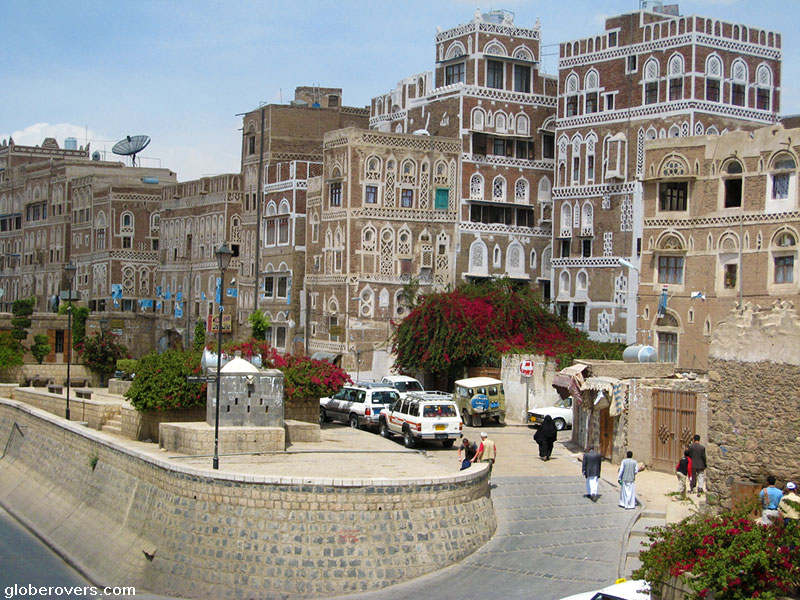
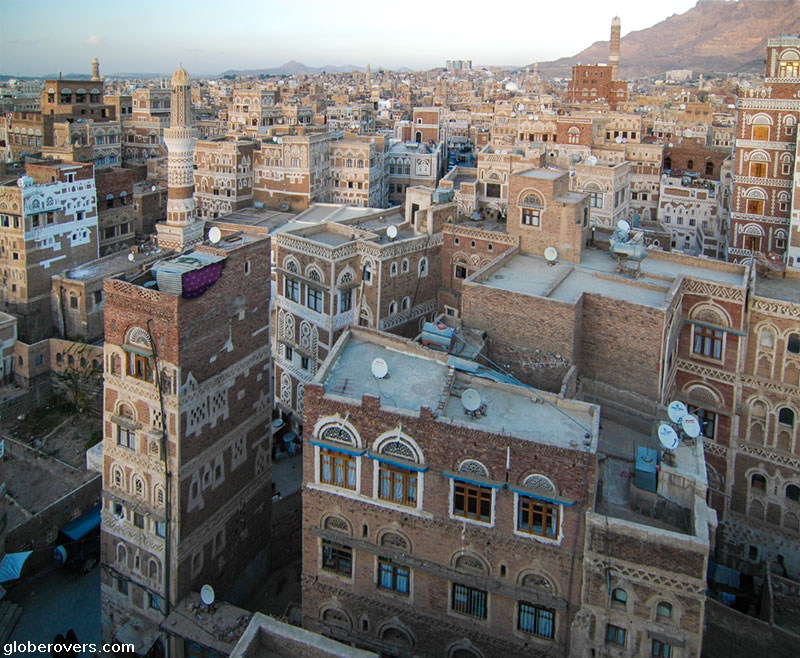

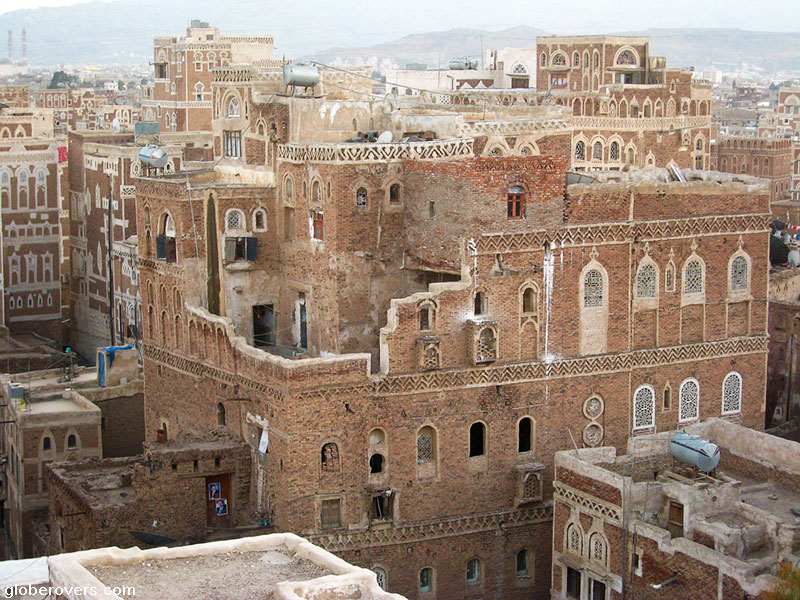
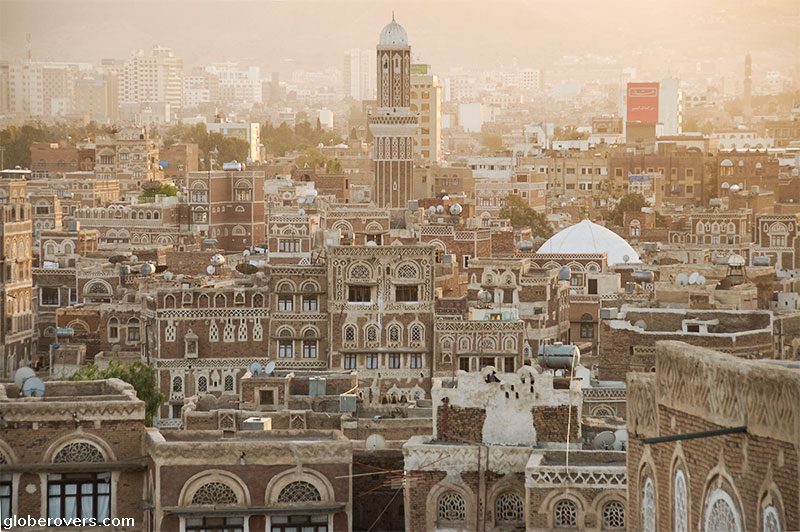
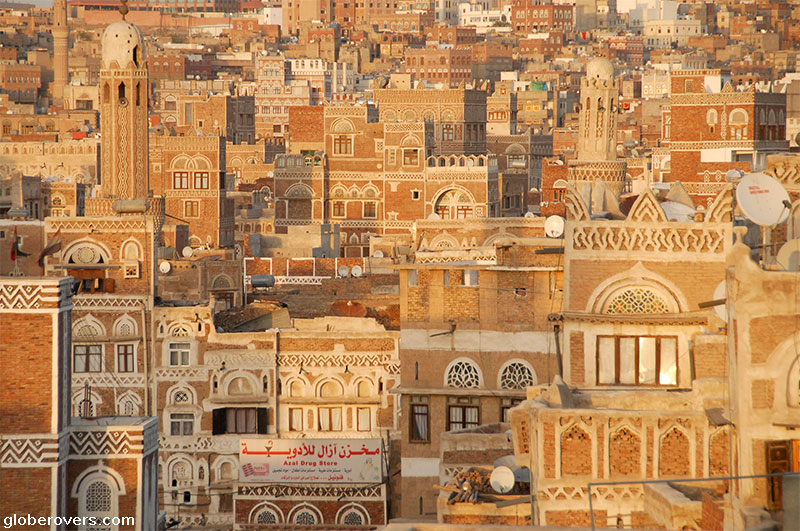
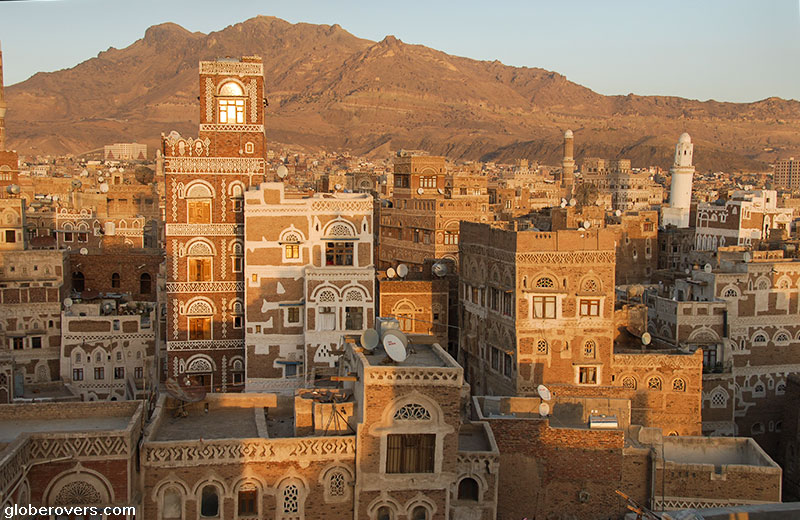
☛ Read more: All Posts about Yemen
☛ Read more: Yemen – Where Time Stands Still
☛ Read more: Unique Rock Villages of Yemen
☛ Read more: Yemen’s Hadhramaut Valley
☛ Read more: Growing up in Al-Mahwit, Yemen



Blog post and photos by Peter who has been travelling almost full-time since 2005 and has been to over 122 countries. He visited several countries, such as Japan, more than 20 times. Peter is Editor-in-Chief and Publisher of GlobeRovers Magazine, an independent travel magazine focused on intrepid destinations.

1 comment
[…] Photo Essays […]